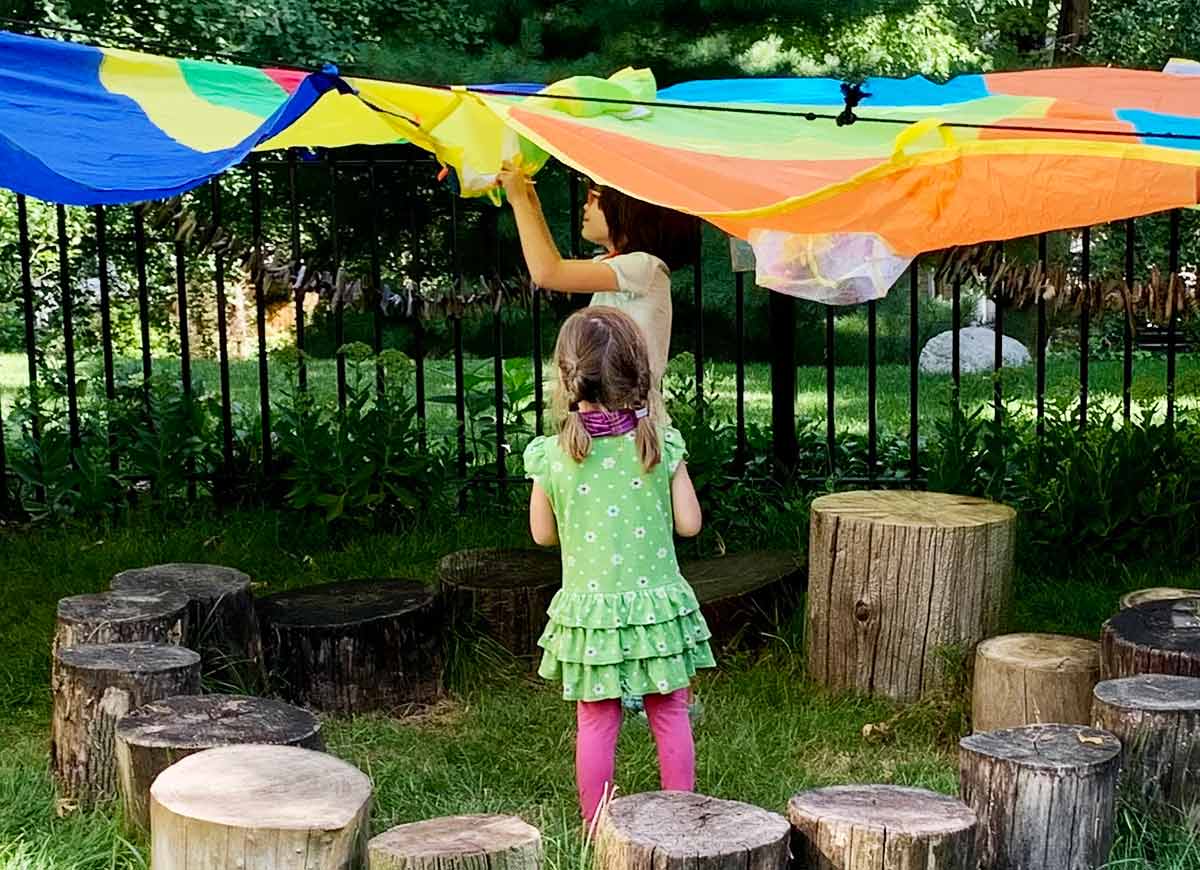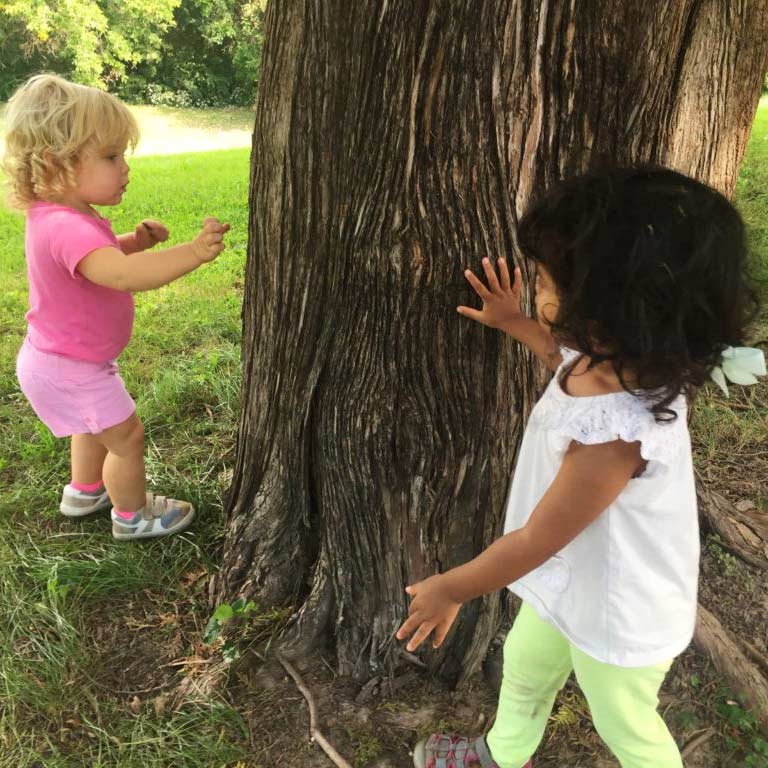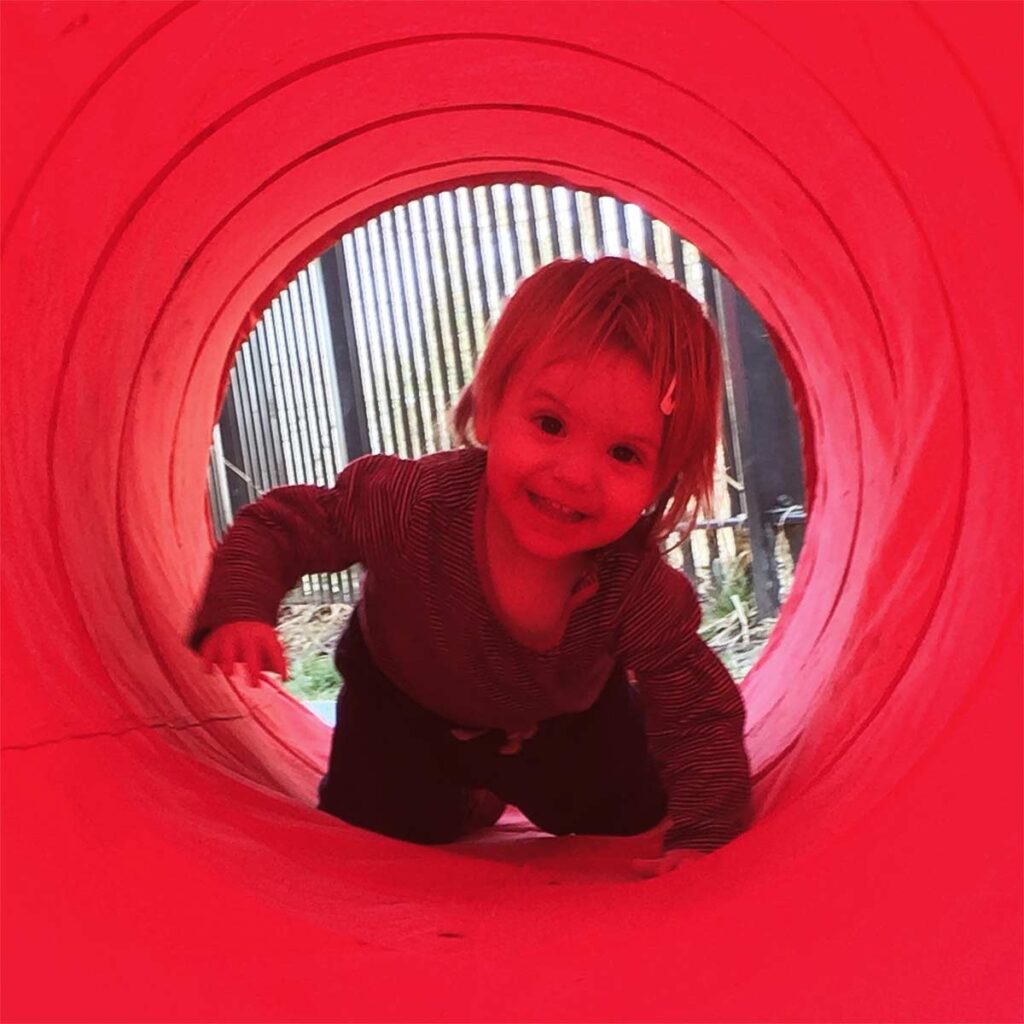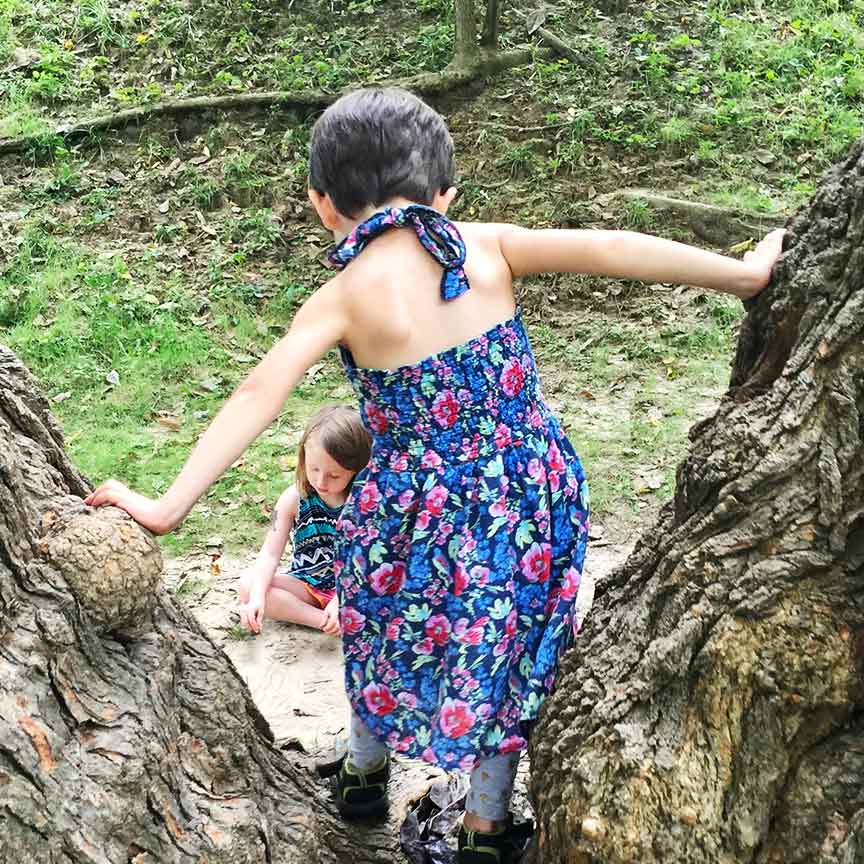Obstacle-Course Math
Introduction
When people think about early math skills, they often think about numbers. But spatial reasoning is another important piece of the early math puzzle. Obstacle courses are a great way to build children's spatial-reasoning skills and vocabulary.

Gather Materials
Use what you have! This list will get you started, but Obstacle Course Math can be played with any items that you find in your house, in your yard or at the park.
- Buckets
- Chalk
- Cones
- Hula Hoops
- Jump Rope
- Parachute
- Pillows
- Pool Noodles
- Tunnels
Note: Small parts pose a choking hazard and are not appropriate for children age five or under. Be sure to choose lesson materials that you feel are safe for your child and that you are comfortable letting your child use.
Activity
Obstacle courses are a great way for children to learn, hear and use spatial vocabulary words such as above, around, below, beside, between, over and through while they develop their spatial-reasoning skills. Obstacle courses also teach children about sequencing, memorization and how to follow directions.
Best of all, kids LOVE them!
As you design your obstacle course, consider the various elements that will make it both fun and challenging. Try to incorporate some of the following elements:
- Something to jump over or into: I like to use chalk lines, hoops, pool noodles, rope and other items. I often use chalk to draw circles, rectangles, squares and triangles just to sneak some more math into our day! As the children begin to learn about the different shapes, they are developing a rudimentary understanding of geometry.
- Something to climb over: In the classroom, we use pillows. When we're outside, we climb over the picnic table or up the slide. The slide is a popular feature in many of our obstacle courses.
- Something to weave around and between: We often use cones or buckets, two-liter plastic bottles filled with water or natural landmarks such as trees, bushes and gardens.
- Something to crawl through or under: We use tunnels, parachutes, boxes, etc.
- Something to walk or balance on with care, such as a curved rope, river rocks or tree stumps.
- Something to run toward, such as a fence, a tree or a door at the beginning or end of the course.
You can add more math to the course by counting the hoops and cones as the children jump into or go around each one or measuring the distance between the different obstacles.
Obstacle courses also help children develop their gross-motor skills. Be sure to add activities such as crawling, hopping, jumping and skipping. If your outdoor area has natural slopes and uneven terrain, these features provide additional gross-motor challenges.
Remember to keep it simple and keep it fun. The learning will take care of itself!


